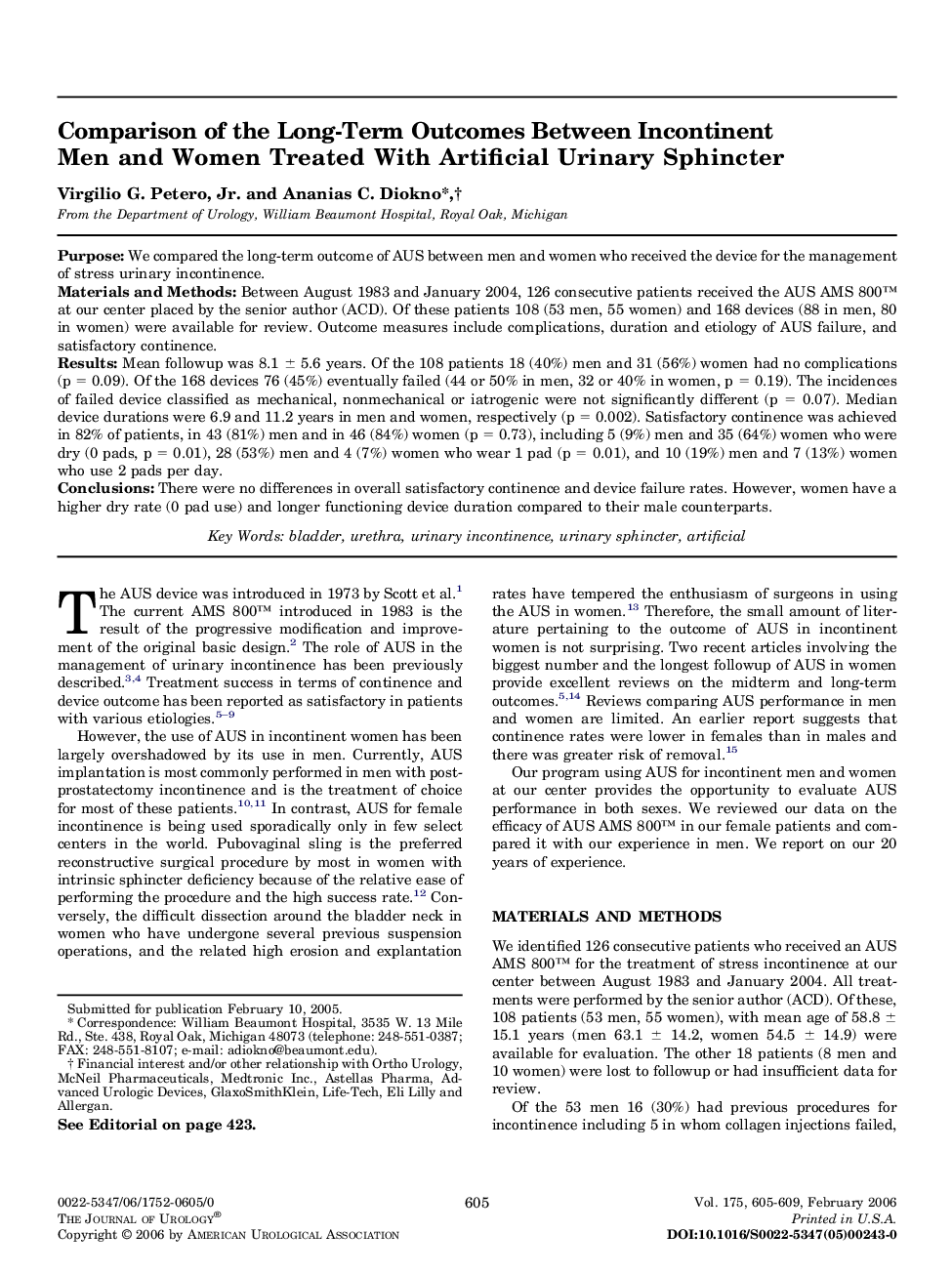| Article ID | Journal | Published Year | Pages | File Type |
|---|---|---|---|---|
| 3878110 | The Journal of Urology | 2006 | 5 Pages |
PurposeWe compared the long-term outcome of AUS between men and women who received the device for the management of stress urinary incontinence.Materials and MethodsBetween August 1983 and January 2004, 126 consecutive patients received the AUS AMS 800™ at our center placed by the senior author (ACD). Of these patients 108 (53 men, 55 women) and 168 devices (88 in men, 80 in women) were available for review. Outcome measures include complications, duration and etiology of AUS failure, and satisfactory continence.ResultsMean followup was 8.1 ± 5.6 years. Of the 108 patients 18 (40%) men and 31 (56%) women had no complications (p = 0.09). Of the 168 devices 76 (45%) eventually failed (44 or 50% in men, 32 or 40% in women, p = 0.19). The incidences of failed device classified as mechanical, nonmechanical or iatrogenic were not significantly different (p = 0.07). Median device durations were 6.9 and 11.2 years in men and women, respectively (p = 0.002). Satisfactory continence was achieved in 82% of patients, in 43 (81%) men and in 46 (84%) women (p = 0.73), including 5 (9%) men and 35 (64%) women who were dry (0 pads, p = 0.01), 28 (53%) men and 4 (7%) women who wear 1 pad (p = 0.01), and 10 (19%) men and 7 (13%) women who use 2 pads per day.ConclusionsThere were no differences in overall satisfactory continence and device failure rates. However, women have a higher dry rate (0 pad use) and longer functioning device duration compared to their male counterparts.
